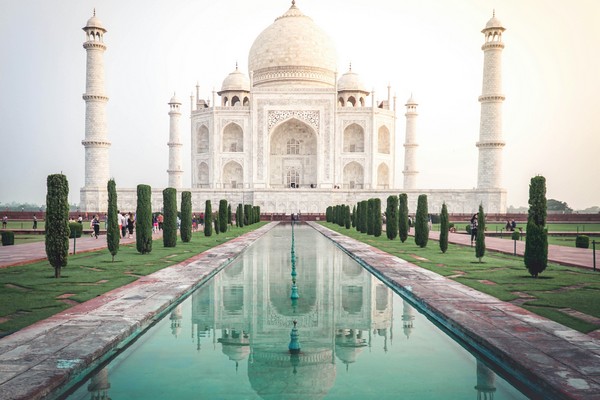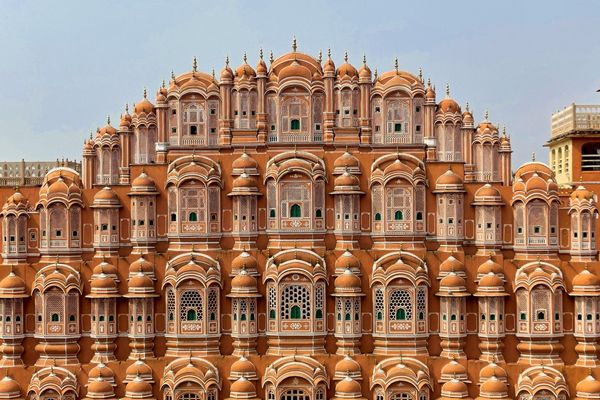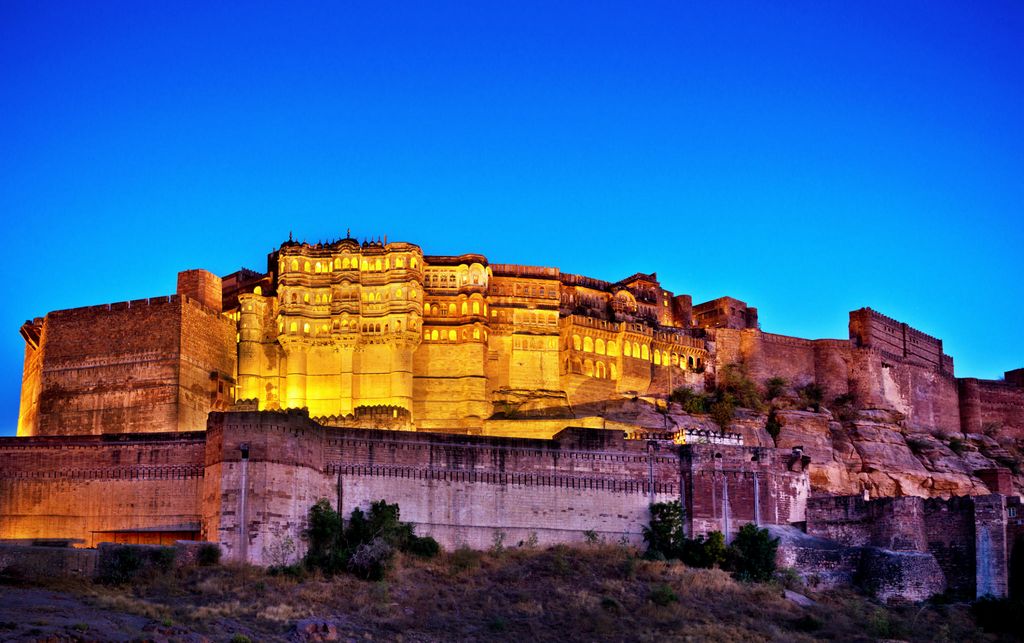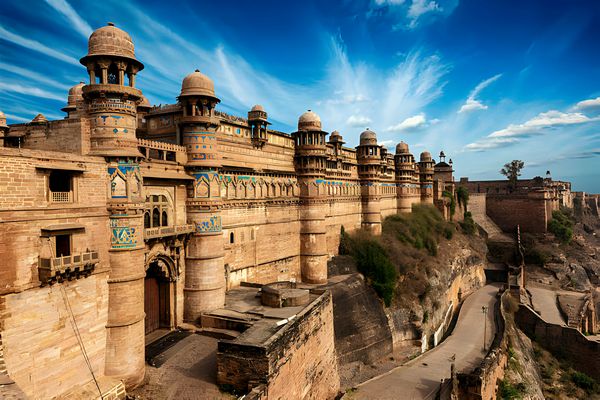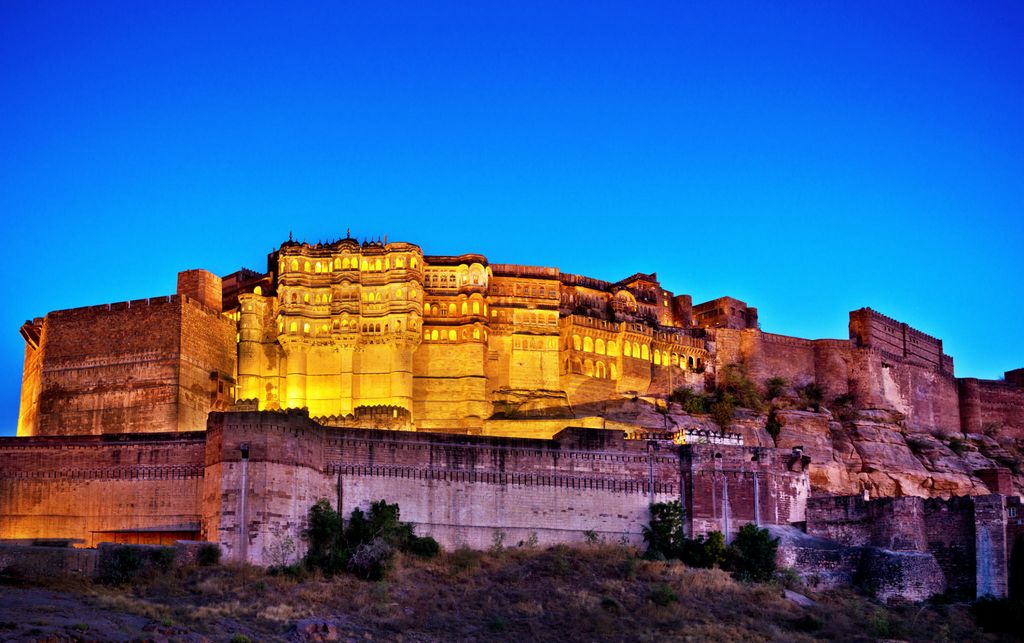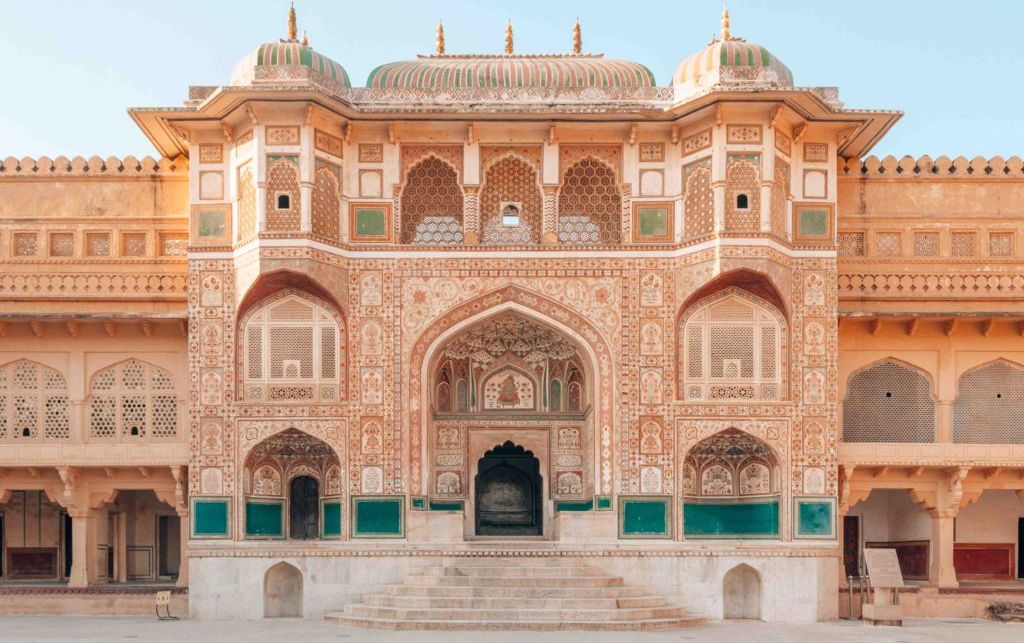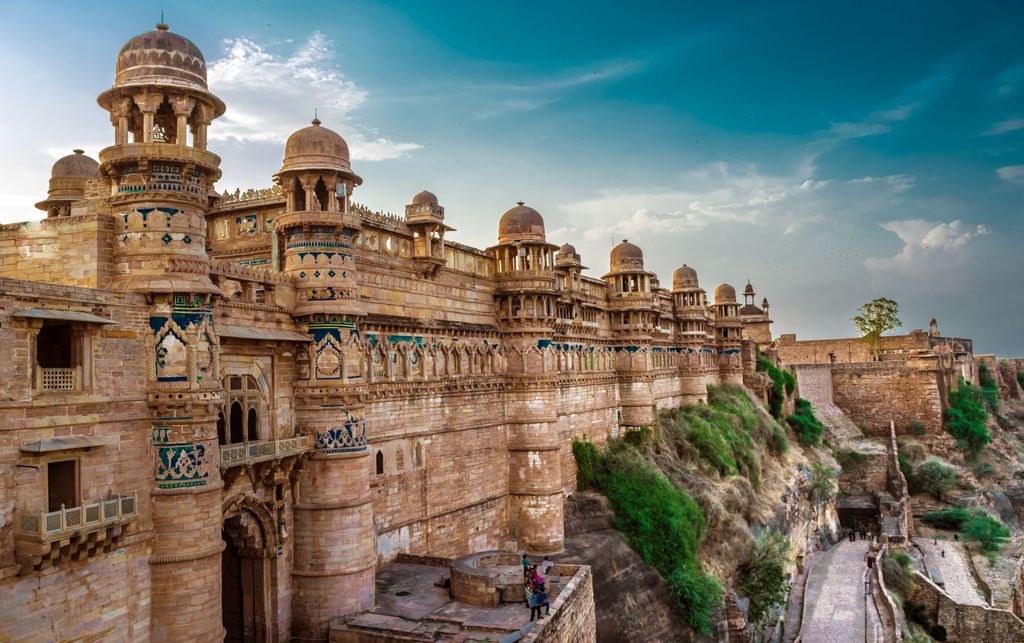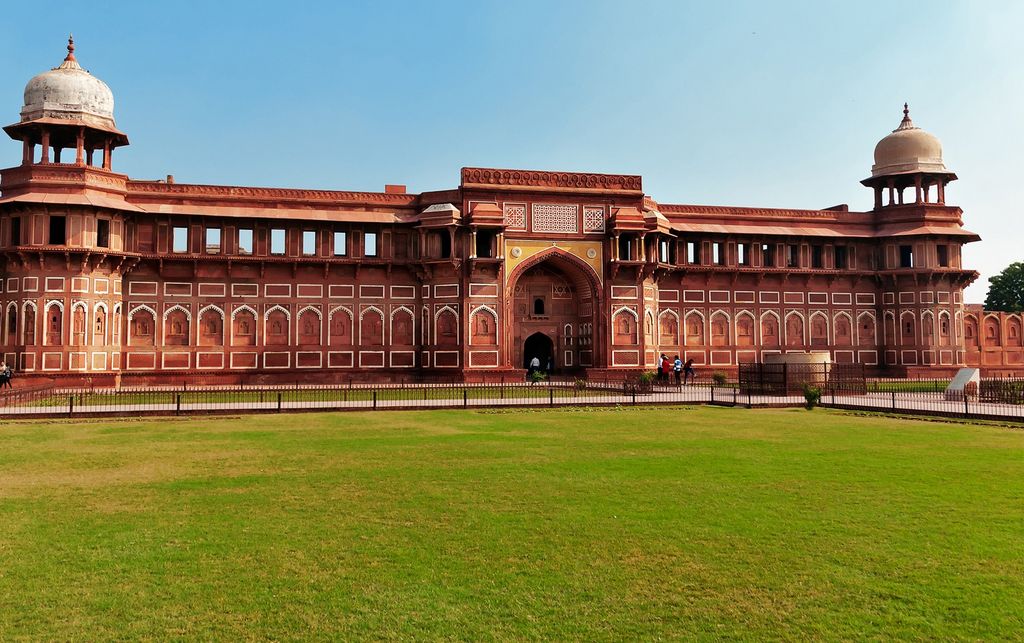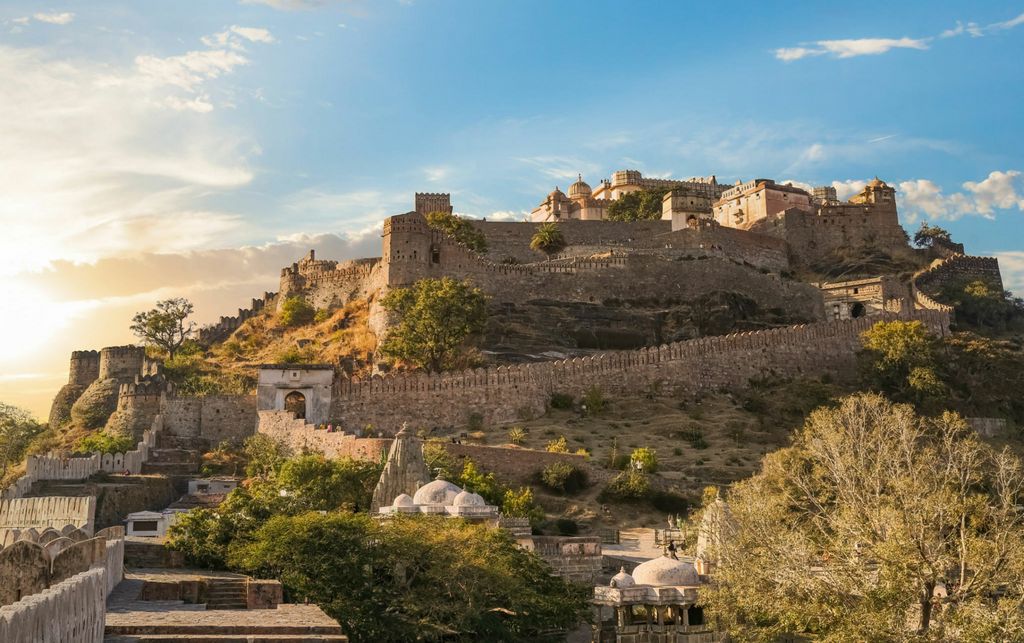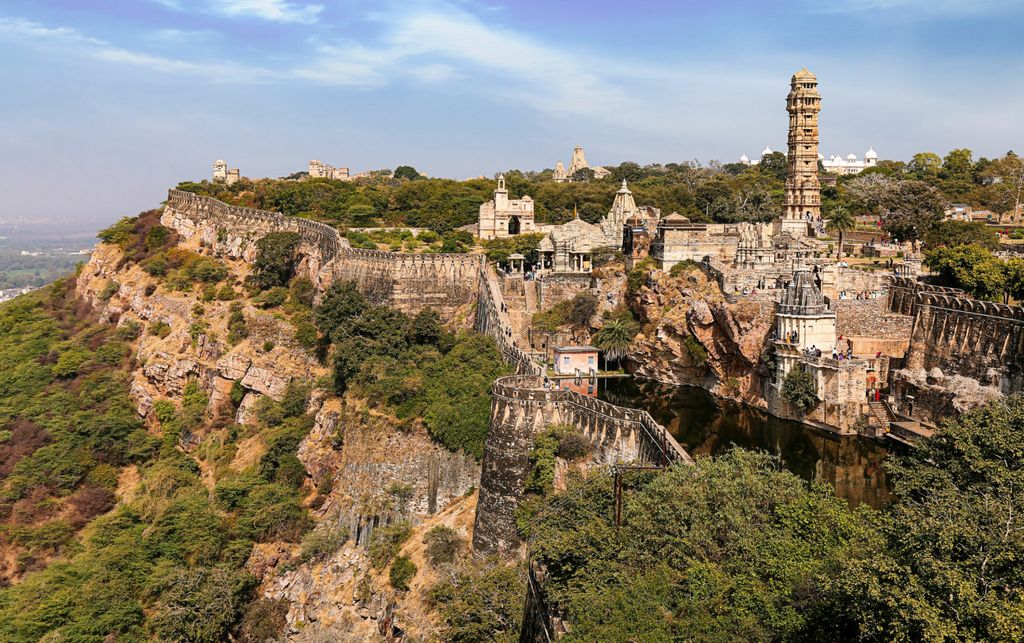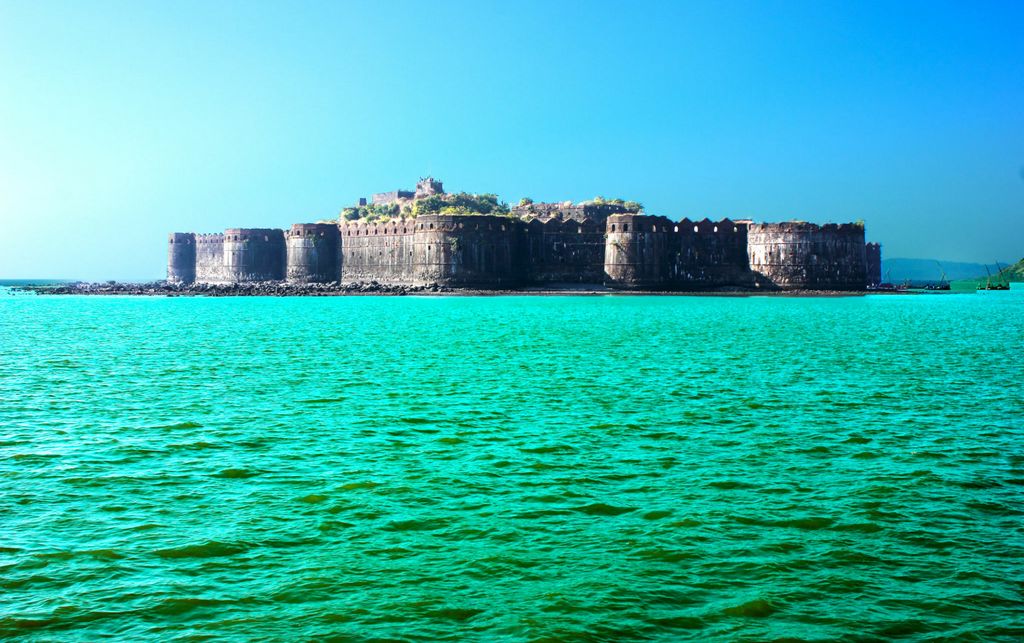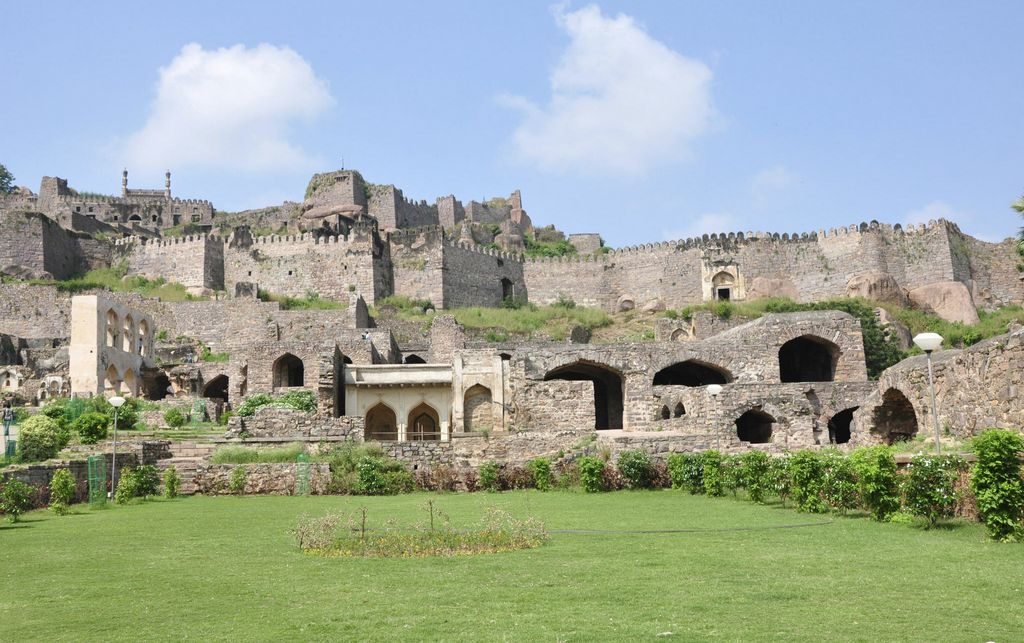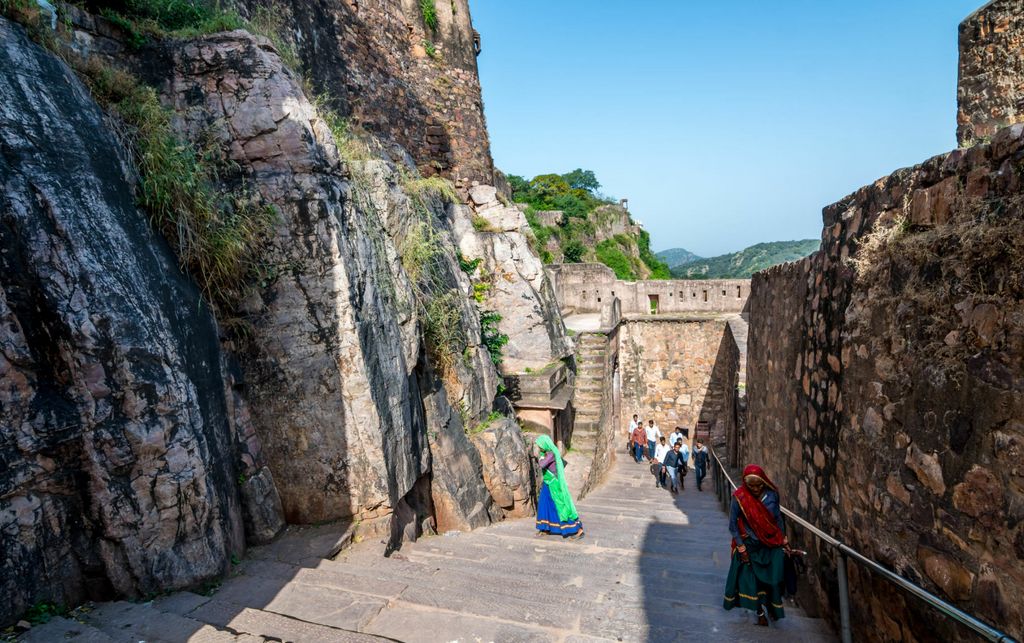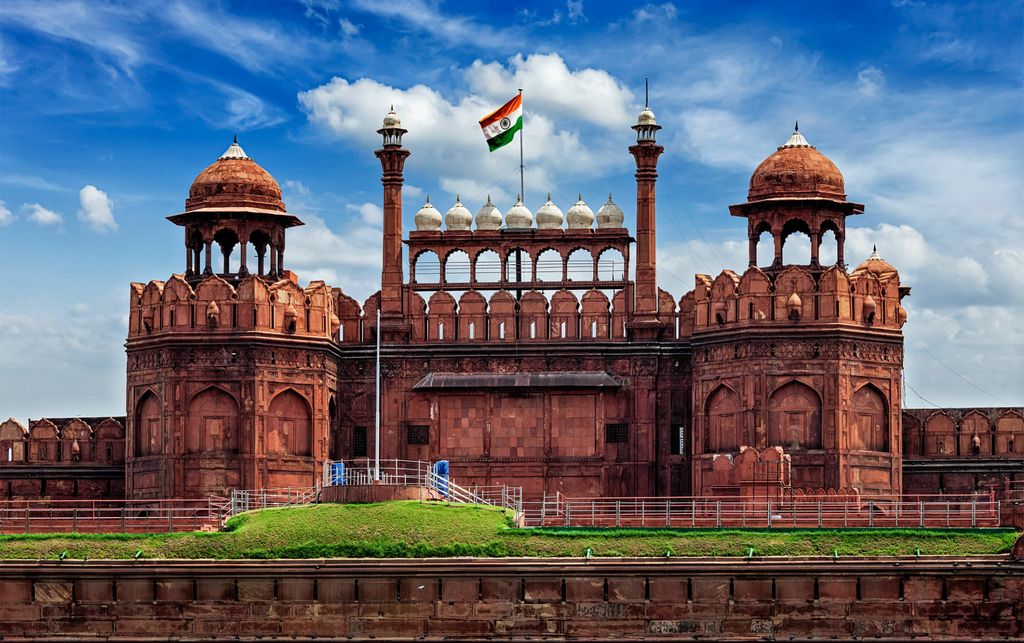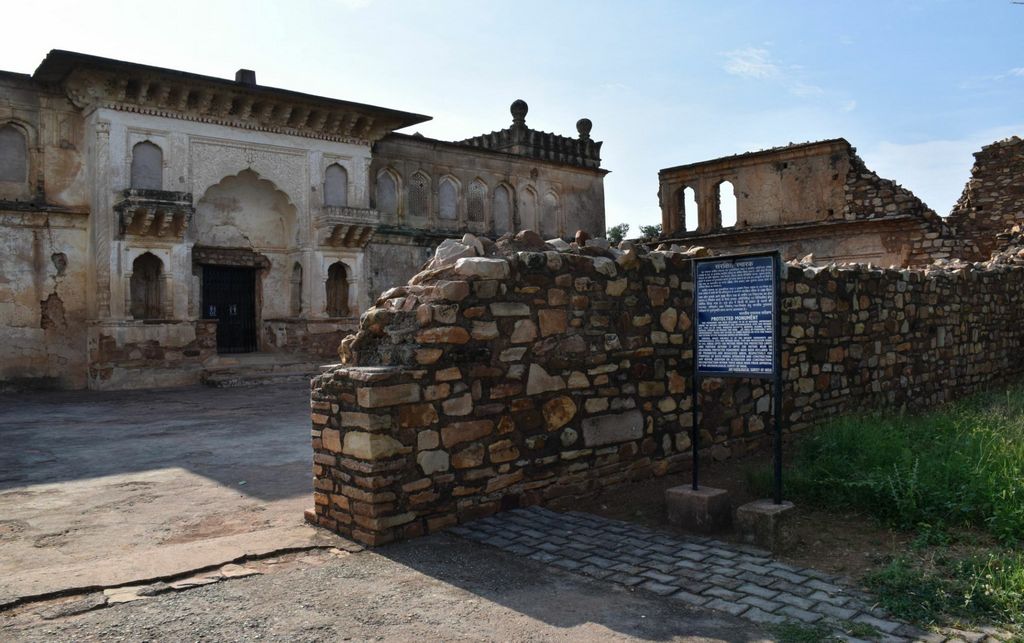Timeless Splendors – 11 Must-Visit Forts of India
India, a land of remarkable heritage and architectural brilliance, proudly boasts a plethora of forts that stand as glorious testaments to its rich history. These formidable structures have witnessed centuries of valor, power struggles, and cultural evolution. In this blog, we will embark on a fascinating journey to explore ten must-visit forts scattered across the diverse landscape of India.
Amber Fort, Jaipur
Amber Fort and Palace, situated on a picturesque hilltop just outside Jaipur, stand as magnificent examples of India’s rich history and architectural prowess. Built in the 16th century by Raja Man Singh I, a trusted general of Emperor Akbar, the fort was later expanded and renovated by his descendant, Raja Jai Singh I. Its architecture seamlessly blends Rajput and Mughal styles, showcasing exquisite detailing and intricate craftsmanship. The fort, constructed primarily with red sandstone, along with stunning white marble, boasts ornate frescoes, delicate mirror work, and splendid mosaics that adorn its walls and ceilings. One of its prominent attractions is the Sheesh Mahal, the Mirror Palace, a chamber entirely covered with intricate mirror work, creating a mesmerizing effect when lit by candlelight. The fort’s strategic location atop a hill offers not only a splendid view of Maota Lake but also served as a natural defense mechanism, making it an impregnable stronghold during ancient times. Today, Amber Fort and Palace stand as living testaments to India’s royal legacy, drawing visitors from around the world to marvel at their historical significance and architectural grandeur.
Gwalior Fort, Gwalior
Gwalior Fort, situated atop a sandstone hill in the city of Gwalior, Madhya Pradesh, is a living chronicle of India’s rich historical tapestry. With origins dating back to the 10th century, this fort has witnessed the rise and fall of several dynasties, from the Tomars and Mughals to the Marathas and British. The monument and scriptures found within the fort indicates that it may existed from 6th century. Its remarkable architecture reflects the diverse cultural influences that shaped the region over the centuries. One of its most iconic features is the Man Singh Palace, showcasing a blend of Rajput and Mughal architectural styles with its intricately carved windows, arches, and balconies. The Sas Bahu Temples, dedicated to Lord Vishnu, are notable religious structures within the fort, exhibiting exquisite carvings and detailed craftsmanship. The Teli-ka-Mandir, adorned with a distinct Dravidian influence, stands tall as the fort’s tallest structure. Additionally, the fort houses the mesmerizing Gujari Mahal, an archaeological museum displaying a rich collection of artifacts, sculptures, and historical relics, providing a deep insight into the region’s cultural heritage. Gwalior Fort, a UNESCO World Heritage Site, continues to captivate visitors with its historical significance and architectural marvels, making it a must-visit destination for history enthusiasts and travelers alike.
Agra Fort, Agra
Agra Fort, a UNESCO World Heritage Site located in the city of Agra, Uttar Pradesh, stands as an enduring testament to the grandeur of India’s Mughal era. Constructed primarily during the reign of Emperor Akbar in the 16th century, the fort underwent significant expansions under his successors, especially Shah Jahan, who added the opulent white marble palaces that are now iconic symbols of the fort. Agra Fort played a pivotal role in the shaping of India’s history, serving as the main residence of the Mughal emperors until 1638 when Shah Jahan moved the capital to Delhi. The fort also witnessed the imprisonment of Shah Jahan by his own son, Aurangzeb, in one of its towers, from where he gazed at the Taj Mahal, the magnificent monument of love that he built for his beloved wife. The fort’s historical importance extends beyond its architectural splendor; it is a site that encapsulates the rise and fall of dynasties, the blending of cultures, and the evolution of art and architecture during one of India’s most significant epochs. Today, Agra Fort remains a symbol of India’s rich heritage, drawing millions of tourists from around the world who marvel at its magnificent structures and delve into the pages of India’s storied past.
Kumbhalgarh Fort, Rajasthan
Kumbhalgarh Fort, situated amidst the rugged Aravalli Hills in the Mewar region of Rajasthan, stands as a symbol of courage, resilience, and architectural brilliance. Constructed in the 15th century by Maharana Kumbha, the ruler of Mewar, the fort served as a strategic stronghold against numerous invasions and sieges. Its formidable walls, extending over 36 kilometers and considered the second-longest continuous wall after the Great Wall of China, are a testament to the engineering prowess of its time. Kumbhalgarh Fort has immense historical importance, especially for its role in protecting the Mewar kingdom against the forces of the mighty Mughal emperor, Akbar. The fort’s significance is also deeply rooted in its association with the legendary Rajput warrior, Maharana Pratap, who was born within its walls. Today, the fort is not only a UNESCO World Heritage Site but also a popular tourist destination, drawing history enthusiasts, architecture admirers, and travelers from across the globe. It stands as a reminder of Rajasthan’s glorious past, narrating tales of valor, culture, and the indomitable spirit of the Rajputana rulers.
Chittorgarh Fort, Chittorgarh
Chittorgarh Fort, perched magnificently on a 180-meter hilltop at overlooking the plains of Rajasthan, narrates a saga of bravery, honor, and resilience etched in the annals of Indian history. As per the legend the fort was founded in the 7th century AD by the Mori Rajput Ruler, Chitrangada Mori, the fort gained immense prominence during the reign of the Sisodia Rajputs earlier known as Guhila in the 8th century. Over the centuries, it became a symbol of Rajput pride, standing as an impregnable fortress that bore witness to countless battles and heroic sacrifices. The fort’s importance is deeply intertwined with the legendary tales of Rani Padmini, whose courage and sacrifice in the face of adversity are celebrated in Indian folklore. Chittorgarh Fort also witnessed the gallant resistance led by Maharana Pratap against the mighty Mughal emperor Akbar in the 16th century. Its architectural splendor includes grand palaces, majestic towers, intricate temples, and massive gates, reflecting the artistic and engineering brilliance of the Rajput era. Today, as a UNESCO World Heritage Site, Chittorgarh Fort stands not just as a historical monument but as a living testament to the indomitable spirit of the Rajputs and a source of inspiration for generations, embodying the ethos of honor and valor.
Mehrangarh Fort, Jodhpur
Mehrangarh Fort, situated in the heart of Jodhpur, Rajasthan, is a majestic embodiment of Rajasthan’s rich cultural and architectural heritage. Built in the mid-15th century by Rao Jodha, the fort rises dramatically on a 410 feet high hill, offering breathtaking panoramic views of the city below. The fort’s name, Mehrangarh, translates to “Fort of the Sun,” emphasizing its strategic location and grandeur. The fort’s architecture is a harmonious blend of Rajput and Mughal styles, featuring intricate carvings, ornate lattice work, and splendid palaces like Moti Mahal (Pearl Palace) and Phool Mahal (Flower Palace). The extensive fortifications, including massive walls and imposing gates, reflect the military acumen of its builders. Mehrangarh Fort holds immense historical importance as it served as the seat of the Rathore dynasty, and its well-preserved heritage showcases the opulence and valor of Rajasthan’s royal past. Today, it stands as a symbol of Jodhpur’s identity and a prime tourist attraction, attracting visitors from all over the world who are captivated by its architectural magnificence and the fascinating tales of Rajasthan’s glorious history.
Sindhudurg Fort, Sindhudurg
Sindhudurg Fort, nestled along the picturesque shores of the Arabian Sea in Malvan, Maharashtra, is a historic marvel that stands as a testament to India’s maritime heritage. Built in the 17th century by the Maratha warrior king, Chhatrapati Shivaji Maharaj, this impressive fortress served as a strategic naval base to safeguard the Maratha kingdom from coastal invasions. The fort’s name, Sindhudurg, translates to “fort in the sea,” highlighting its unique location on an islet, which required remarkable engineering skills during its construction. Its distinctive architecture includes massive stone walls, strategically placed bastions, and a labyrinth of secret tunnels, showcasing the ingenuity of its builders. Sindhudurg Fort holds immense historical significance, as it symbolizes the Maratha Empire’s naval prowess and their determination to protect their coastline from foreign powers. Today, it stands as a cherished heritage site, drawing history enthusiasts, architecture aficionados, and tourists alike, providing a glimpse into India’s maritime past and the valor of its people.
Golconda Fort, Hyderabad
Golconda Fort, located on a granite hill in Hyderabad, Telangana, stands as a testament to the opulence and grandeur of India’s medieval past. Dating back to the 11 th century, the fort’s history is intertwined with various dynasties, including the Kakatiyas and the Bahmanis, before falling under the control of the Qutub Shahi dynasty in the 16th century. Under their rule, Golconda Fort became a thriving trade hub, especially for diamonds, making it a significant center for the diamond trade in the world. The fort’s unique acoustic design, where even a handclap at the Fateh Darwaza (Victory Gate) can be heard at the highest point, showcases the advanced engineering skills of its architects. The fort’s architectural marvel includes intricate carvings, delicate stucco work, and majestic gateways, reflecting a blend of Persian, Indian, and European influences. Golconda Fort holds immense importance in India’s history, not only as a symbol of economic prosperity but also as a strategic military stronghold. Today, it stands as a popular tourist destination, drawing visitors with its historical significance, architectural brilliance, and the captivating tales of its bygone era.
Ranthambore Fort, Sawai Madhopur
Ranthambore Fort, perched atop a hill in the heart of the Ranthambore National Park in Rajasthan, is a magnificent testament to the region’s rich history and architectural prowess. Dating back to the 10th century, the fort has witnessed the rise and fall of several dynasties, from the Chauhans to the Mughals and later, the British. Its strategic location made it a prized possession, often contested by rulers seeking control over the fertile lands surrounding it. The fort’s architecture showcases a seamless blend of Rajput and Islamic styles, featuring towering gates, majestic palaces, and intricately carved temples. The Ganesh Temple, devoted to Lord Ganesha, is a notable religious site within the fort, attracting devotees and tourists alike. The fort’s historical importance extends beyond its architectural grandeur; it served as a crucial defense point for the region and played a vital role during various military campaigns. Today, Ranthambore Fort stands as a UNESCO World Heritage Site and a popular tourist destination, offering visitors a glimpse into Rajasthan’s rich cultural heritage and the opportunity to explore the historical remnants of its glorious past.
Red Fort, Delhi
The Red Fort, or Lal Qila, in Delhi stands as an iconic symbol of India’s rich history, architectural brilliance, and cultural heritage. Built in the 17th century by the Mughal Emperor Shah Jahan, this magnificent fort served as the main residence of the Mughal emperors for nearly two centuries. Its striking red sandstone walls, embellished with intricate white marble inlays and delicate carvings, are a testament to the grandeur of Mughal architecture. The fort’s architectural layout is a harmonious blend of Persian, Timurid, and Indian styles, featuring splendid structures like the Diwan-i-Aam (Hall of Public Audience) and the Diwan-i-Khas (Hall of Private Audience). The fort’s historical importance is unparalleled; it was the site from which India’s first Prime Minister, Jawaharlal Nehru, delivered the country’s independence speech in 1947. Today, as a UNESCO World Heritage Site, the Red Fort stands as a symbol of India’s sovereignty and serves as a major tourist attraction, drawing millions of visitors who are captivated by its historical significance, architectural splendor, and the spirit of India’s independence struggle that it embodies.
Kalinjar Fort, Banda
Perched atop a hill in the formidable Vindhyan range of Central India, the Kalinjar Fort remains one of India’s most underrated citadels, its origins shrouded in the annals of history. The very name “Kalinjar” traces its roots back to mythology; according to legend, this is where Lord Shiva triumphed over death after ingesting the “Halahal” poison that emerged during the churning of the sea by gods and demons. This victory over “Kal” (Death) lends the fort its name. The fort boasts a rich tapestry of mythological tales, including connections to the Mahabharata epic.
Over the centuries, the Kalinjar Fort witnessed the rule of diverse dynasties, including the Guptas, Gurjar-Pratiharas, Chedis, Chandelas, Solankis, Mughals, Marathas, and the British. Nature itself guards the fort, enveloping it in a protective natural forest cover. Its ramparts, towering at forty-five meters, ascend straight from the rocky foundation, rendering them impervious to cannonballs.
A detailed examination of the fort’s architecture unveils various features typical of Bundela architecture. Within the fort complex, an array of structures such as temples, mosques, gateways, palaces, water tanks, and tombs are scattered. Noteworthy among the seven gateways are the Alamgiri Gate, Ganesh Gate, Chandi Gate, Buddhabhadra Gate, Hanuman Gate, Lal Darwaza, and Bada Darwaza.
Among the fort’s attractions, the Neelkanth temple stands out prominently. Constructed by Chandela ruler Paramaditya Dev, this temple features an impressive sculpture of Kal Bhairav with 18 arms and a garland of skulls adorning its outer wall.
Today, the Kalinjar Fort proudly preserves the legacies of our past. Exploring the fort in person is the only way to truly immerse oneself in this amalgamation of time and heritage.
Exploring these forts is like embarking on a time-traveling adventure, where history, culture, and architectural brilliance converge. Each fort narrates a unique story, making them indispensable stops for any traveler seeking to unravel the mysteries of India’s past. As you plan your next journey, consider including these magnificent forts in your itinerary to experience the grandeur and heritage of this incredible country.

